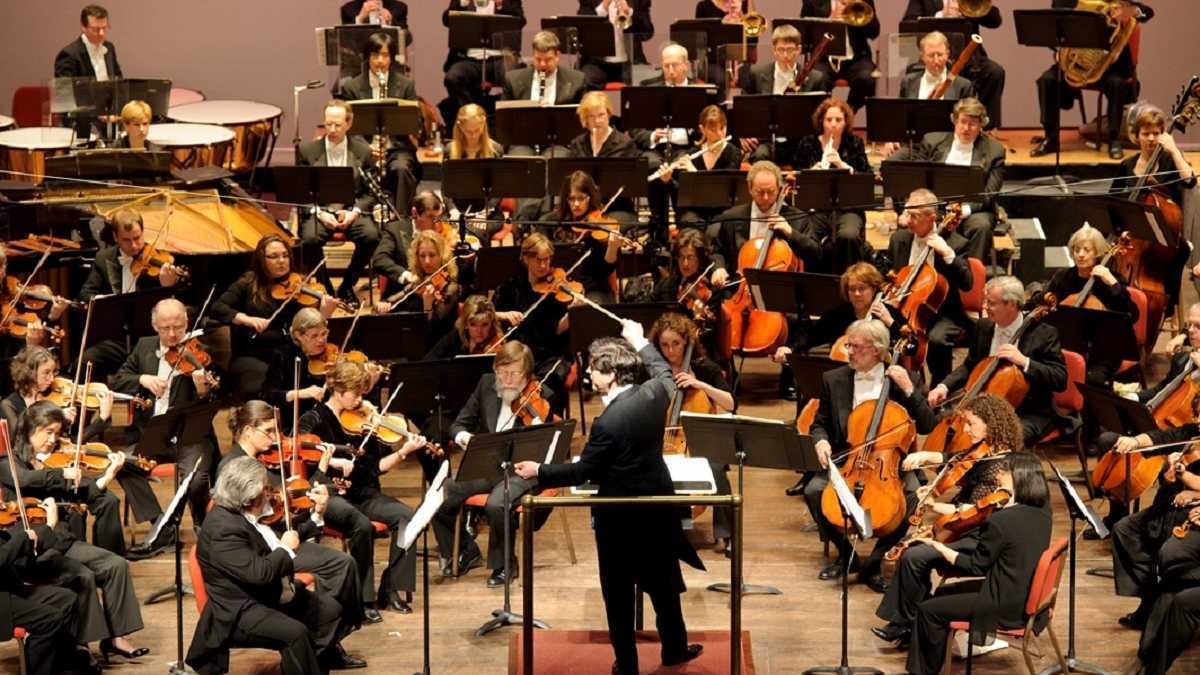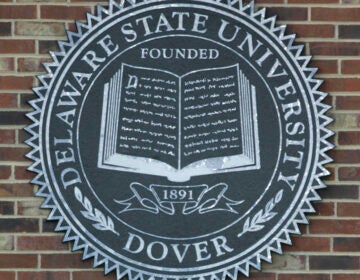Review: Delaware Symphony in glorious form

(Photo courtesy of Delaware Symphony Orchestra)
The Delaware Symphony Orchestra was in glorious form Friday night as it celebrated the opening of a new season of Classics at The Grand Opera House in Wilmington.
The orchestra used the occasion to present the 2016-17 A.I. duPont Composer’s Award to iconic composer conductor and pianist Andre Previn. The program featured a performance of his Double Concerto for Violin and Cello as well as a rendering of Mahler’s Symphony No. 5.
DSO Executive Director Alan Jordan and Board President Charles Babcock praised the 87-year-old legend for his illustrious career that has spanned more than six decades to include work in film, jazz and contemporary classical music.
The multi-award-winning Previn is indeed one of the most versatile and least categorizable musicians of his generation. Quite possibly of any generation. That eclecticism was evident in the Double Concerto performed by violinist Jaime Laredo and cellist Sharon Robinson, the married duo for whom it was composed.
Previn knew his soloists well—he also composed his Piano Trio No. 2 for their trio with pianist Joseph Kalichstein—and wrote to their strengths: Robinson’s dark, authoritative tone and Laredo’s sweet, shimmering lyricism.
The most famous work for violin and cello is Brahms’ A minor concerto. But where Brahms is all Germanic gravitas and complexity, Previn is Viennese joyousness and clarity.
The first movement—which opens with an expansive theme played by the soloists—is a whimsical concoction of invention and convention. Angular themes gave way to sweeping, grandiose melodies punctuated by striking, pungent harmonies. Quixotic rhythms and frequent tempo changes abound. The orchestra engaged in a lively dialogue of its own but paused long enough for a lovely oboe solo played by Principal Jeffrey O’Donnell.
Previn’s gift for crafting beautiful melody was evident in the slow movement which featured soaring themes for strings, horns and winds and a heartfelt, contemplative statement for the soloists.
The musical pastiche returned for the finale which was playful and witty with flashes of Hollywood a la Bernstein and Korngold. Brass and percussion assumed more aggressive roles as the soloists dialogued to bring the work to a close with a resounding chord.
The second half of the program featured a work by another iconic composer-conductor, the late Romantic Gustav Mahler. Like Previn, Mahler’s works can be just as pleasurable as popular music, as they range from the light-hearted to the serious.—sometimes within the same composition.
Although Mahler has achieved a high level of popularity among lovers of classical music, his music is less accessible to patrons of regional orchestras. His works are long and complex, often requiring additional musicians, choruses and operatic soloists.
DSO Music Director David Amado noted that Mahler’s Fifth is indeed one of the most complex works in the standard orchestral literature. It is full of themes, counter-themes, contrapuntal writing, abrupt changes in mood and scoring and an expansive dynamic range.
But it also demands softness and transparency. It contains extended passages for trumpet and horn, which were given outstanding performances by Principal Trumpet Brian Kuszyk and Principal Horn Karen Schubert.
One criticism routinely leveled against Mahler is his tendency toward uber-emotionalism. Amado maintained control by letting the musical structures speak for themselves, from the opening funeral march through the jolly but sometimes sinister scherzo to the jubilant finale. The slow movement — often an invitation to pour on the schmaltz — was quiet and lyrical.
The decision to perform this massive work was proof of the mature partnership Amado has forged with the orchestra. He knows their capabilities and they know what he wants and they deliver in extraordinary fashion. The audience recognized their respective accomplishments and responded with thunderous applause.
WHYY is your source for fact-based, in-depth journalism and information. As a nonprofit organization, we rely on financial support from readers like you. Please give today.




